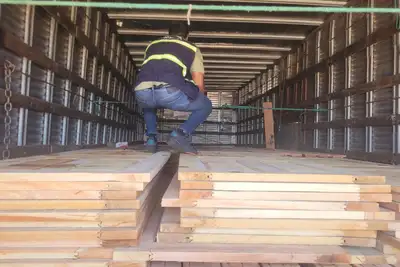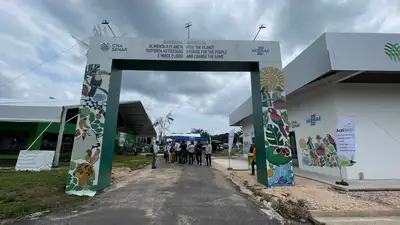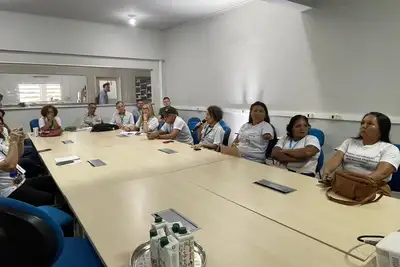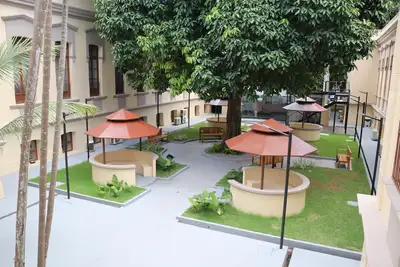Ararajubas return to the skies of Belém: release of 15 birds marks a historic chapter at COP30
The moment symbolizes more than the opening of a door: it represents a reunion of the city with a species that had disappeared from the urban landscape for decades.

The Utinga State Park woke up differently this Monday (17). Amid the singing of the first ararajubas and the expectations of researchers, managers, and visitors, the Government of Pará carried out the release of the first 15 of the 30 birds planned for this year in honor of COP30. The moment symbolizes more than the opening of a door: it represents a reunion of the city with a species that had disappeared from the urban landscape of Belém for decades.
The action marks a new advance of the Ararajuba Reintroduction and Monitoring Project in the Metropolitan Region of Belém, carried out for eight years by the Institute of Forest Development and Biodiversity of Pará (Ideflor-Bio), in partnership with the Lymington Foundation. Since the beginning of the initiative, 58 birds have been returned to nature, and another seven were born in Pará, the result of natural reproduction — a powerful indicator that the species is finally beginning to reestablish itself in the local ecosystem.

The governor of Pará, Helder Barbalho, participated in the activity and highlighted the symbolism of the moment.
“Opening this door and releasing these birds represents repopulating the Amazon. Species that were once dominant are returning to live fully in their habitat. Urban pressure drove the ararajuba away, but with this program, we are reintroducing dozens of individuals to recover the atmosphere of our biodiversity. Performing this gesture during COP30 reinforces to the world that it is possible to reconcile development, conservation, and life in the legitimate, vibrant, and sustainable Amazon,” he stated.
A joint effort for conservation
This achievement is especially significant in light of the historical scenario. Until recently, ararajubas were considered extinct in the surroundings of the capital. Most of the birds now flying over Belém were born in controlled captivity at the Lymington Foundation in Juquitiba (SP), where they receive veterinary care, balanced nutrition, and essential behavioral stimuli for development. The journey to Pará begins the most sensitive phase of the process: acclimatization.

In the aviary of the Utinga State Park, the birds remain for four to six months in a specially prepared environment to strengthen their natural abilities. There, they undergo flight training, socialization, and rigorous health evaluations. The diet also changes, incorporating Amazonian fruits such as açaí, murici, and uxi — a decisive step for them to recognize food from the habitat they are about to return to. It is a period of relearning and connection with the forest that will welcome them.
The result of this joint effort has moved those who closely follow the trajectory of the ararajubas. After decades absent from the skies of Belém, they have been seen again in flocks, crossing the horizon with their golden-yellow and vibrant green colors. This rebirth evokes pride not only among specialists but also among residents who rediscover, in their daily lives, a part of the ecological memory of the city.
A new stage and improvements
The project gained new momentum in April 2024, when Ideflor-Bio and the Lymington Foundation signed a Collaboration Agreement that allowed for the expansion of aviary structures, the creation of new environmental education spaces, and the installation of interactive equipment aimed at the public. The expansion transformed Utinga into a reference center for species conservation and brought visitors closer to the science behind reintroduction.

For the president of Ideflor-Bio, Nilson Pinto, the result is an example of how continuous work generates lasting impacts. “The success of this program shows that restoring endangered species is possible when science and commitment walk hand in hand. The ararajubas have returned to stay, and each liberated bird represents a victory for Pará, for the Amazon, and for the future of conservation,” he emphasized.

The director of Biodiversity at Ideflor-Bio, Crisomar Lobato, reinforces that this is not just an environmental action, but also educational. “The ararajuba is a symbol of the Amazon and Brazil. When it is seen free again, it awakens identity, belonging, and responsibility. It is a species that teaches, that connects people to what we are protecting,” he stated.
The Lymington Foundation, a partner since the beginning of the project, also celebrated the new stage. Biologist Marcelo Vilarta, who monitors the preparation of the birds daily, explains that the work aims to strengthen the already established population. He emphasizes that the individuals released today underwent intensive flight training and feeding with native fruits.
“This release reinforces the population and reduces the risk of local extinction. The next group is in preparation and will follow the same process, going through the larger aviary and then this final phase before freedom,” he explained.













